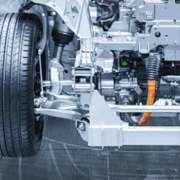Selective Fit Shims Make or Break Tight Tolerance Builds
Manufacturing parts with tight tolerances costs 2-24 times more than standard tolerances. Shims are the unsung heroes of precision assembly that can make or break your build when every thousandth of an inch counts.
Our work with precision components reveals a common pattern. Most engineers don’t think about shim selection until problems surface. These simple spacers are vital to achieve the tight tolerances needed for peak performance and durability. CNC machining can achieve tolerances as tight as ±0.0005 inches. But applying super-tight tolerances to every dimension doesn’t improve a part—it just drives up costs and complicates manufacturing.
This piece dives into why picking the right shims matters for your precision builds. You’ll learn how they influence tolerance stack-up and what materials work best. On top of that, you’ll see the balance between cost and quality, especially when you have precision-tolerance parts with longer life cycles that outperform their lower-tolerance counterparts.
Selective fit shims matter in tight tolerance builds
Microscopic gaps in precision engineering can create catastrophic ripple effects. Simple shims become indispensable components when building with tight tolerances.
Shims are thin pieces of material that fill spaces between two objects or component faces. These precision-engineered spacers perform several vital functions. They level surfaces, provide support, adjust for better fit, and reduce wear between parts. Standard washers distribute loads, but shims specifically fill space to line up components properly.
Materials used in shims range from metals like stainless steel, brass, aluminum, and copper to plastics. Each material offers unique benefits for specific applications. Metal shims deliver better durability and tighter tolerances than other materials. This makes them the top choice in high-precision settings.
Manufacturing operations of all types rely on shims as vital compensators. They absorb accumulated tolerances between mating components. Small gaps between objects get filled by shims to protect expensive components from premature wear or undue stress. This extends machinery lifespan substantially.
The role of shims in dimensional control
Dimensional control in complex assemblies stands out as the most significant shim function. Most assemblies contain dozens or hundreds of parts made by different manufacturers. Gaps naturally fall outside acceptable tolerances. Well-laid-out shims fix these spacing issues without affecting performance.
Aerospace manufacturing shows how minor alignment deviations generate vibration, structural fatigue, and reduced reliability. Brass shim sheets help maintain the tight tolerances that aerospace applications just need. They ensure continuous contact and precise alignment between components.
Shims eliminate the need for precision tolerances on every mating component. Manufacturing time and costs drop substantially while maintaining structural integrity for optimal operation. They compensate for accumulated tolerances during assembly, which makes them a great way to get exact measurements.
Common misconceptions about shim precision
Several misconceptions exist about shim precision despite their importance. Many people see them as simple afterthoughts rather than critical components. Poorly fitted shims cause load imbalance that leads to fatigue cracks. They increase vibration and cause premature wear. Component misalignment affects whole assemblies.
The belief that “almost” works for shim fit ignores serious collateral damage. Construction projects with imprecisely designed shims risk structural failures and lawsuits. Automotive or aerospace applications face equally dangerous risks.
Material selection matters more than most realize. Plastic shims don’t work in high-temperature applications, while stainless steel shims thrive. Marine environments need brass shims because they resist saltwater corrosion better than ferrous metals.
How shims affect tolerance stack-up and assembly fit
Parts moving from design to assembly need precise tolerance control. The right shimming techniques help manage how dimensional variations add up between components.
Understanding tolerance stack-up
The way part tolerances add up affects assembly requirements. This analysis helps predict if components will fit together with expected size variations. Two main methods help calculate stack-ups:
- Worst-case analysis: The original approach sets each tolerance to its maximum limit. This guarantees parts will fit but often needs tighter tolerance than necessary.
- Statistical analysis: This method uses statistical controls to ease component tolerances without quality loss. Root Sum Squared (RSS) is one such technique.
Worst-case analysis works best for safety-critical parts or simple assemblies with three to four components. Statistical methods give designers more flexibility by looking at quality levels rather than maximum variations.
Shim thickness variation and its effect
Small changes in shim thickness can drastically change how well assemblies work. Research proves that too much shim thickness weakens joint strength and reduces service life. Studies show shimming material helps fix assembly gaps, though these gaps make assemblies weaker at first.
Liquid-shimmed joints usually start stiffer but can’t handle as much load. Solid-shimmed joints show the opposite traits.
Datum structure and shim placement
Datum systems work as reference points to position components. The effectiveness of shimming depends on identifying the right datums and placing shims near these reference points.
Putting shims in the right spots next to datums lets technicians “make accurate corrections even a few thousandths of an inch” during alignment. A good grasp of your assembly’s datum structure is key to effective shimming.
Case example: connector misalignment due to shim error
Connector misalignment in aerospace assemblies offers a real-world example. One study found that bigger gaps led to a big deal in stress increase (from 362.4 MPa to 468.1 MPa). This stress builds up around bolt holes where connectors attach.
Shim deformation usually happens around bolt holes, no matter what material you use. The right column of bolt holes sees the highest stress concentration and fails most often.
Material & process considerations for shim selection
The choice of shim material plays a key role in how well an assembly performs. You need to know the advantages and disadvantages of different materials to get the best results in various operating conditions.
Metal vs. plastic shims: pros and cons
Metal shims are stronger and more stable than their plastic counterparts. Stainless steel shims resist corrosion well and have tensile strength up to 1,275 MPa. This makes them perfect for heavy-duty applications. Aluminum works great when you need something light, while brass stands out in marine settings where saltwater can damage components. Plastic shims are much cheaper and offer electrical insulation with good chemical corrosion resistance. However, they can only work in environments below 200°F.
Thermal expansion and environmental effects
Temperature changes can affect shim performance through thermal expansion. When materials expand too much with temperature changes, precise alignments can fail. Metal shims stay strong at elevated temperatures, but plastic ones tend to change shape more easily. The environment plays an important role too – moisture, chemicals, and UV exposure need attention. Plastic shims don’t handle UV rays well, which limits their use outdoors.
Manufacturing methods and achievable shim tolerances
The way shims are made has a huge effect on their precision. Fine blanking creates flat, precise edges that work well for small shims needing tight tolerances. Double-disk grinding works on both sides at once and sets parallel tolerances by removing extra material. Chemical etching gives geometric precision of ±0.025mm without stress or burs. Modern manufacturing techniques can create shims with thickness tolerances as precise as ±0.0004 inches (0.010 mm).
Surface finish and flatness requirements
A shim’s surface finish matters because it changes how much friction there is and how long components last. Shims with good finish reduce friction and work better. Flatness tolerance creates a zone between parallel planes where the surface must stay. This ensures proper contact between matching surfaces. Precision applications usually need surface roughness of 0.25 micrometers (10 microinches), while flatness and parallelism specs often call for 0.001 inches (0.025 mm).
Cost and quality trade-offs in shim specification
Manufacturing costs and part quality maintain a delicate balance in shim specifications. Production expenses and complexity grow as precision requirements increase.
Tighter shim tolerances make costs skyrocket.
Manufacturing costs climb rapidly with tighter tolerance requirements. Smaller allowable deviations lead to much higher manufacturing expenses. The costs rise exponentially because extreme precision calls for expensive production methods, specialized machine tools, and sophisticated inspection devices. Shims with thicknesses as low as 0.05mm make manufacturing a highly technical task that requires specialized equipment like laser cutting or chemical etching.
Thin materials create inspection headaches.
Thin shim materials come with unique inspection challenges. Many variables can affect measurements at microscopic thicknesses. Professional manufacturers use Coordinate Measuring Machines (CMM) to check dimensions in controlled environments and work with micron-range tolerances. These inspection processes get more complex and time-consuming with larger production volumes. Surface contamination makes quality control harder, as tiny imperfections can cause problems in high-precision assemblies.
Functional necessity vs. over-specification
Designers should review whether tight tolerances are actually needed. Part function and fit should determine dimensional tolerances. The key question is: “Will parts work properly if I allow more variation?” Larger tolerances make sense if the answer is yes. Tolerances should be as large as possible without hurting assembly performance from a cost standpoint.
The sweet spot between cost, performance & manufacturability
Understanding true trade-offs helps balance these competing factors. Shims cut manufacturing costs by eliminating the need for precision tolerances in each mating component. Custom shim precision needs advanced manufacturing techniques like CNC machining and laser cutting. Quality control investments raise production costs initially but deliver long-term benefits through fewer repairs and improved project efficiency.
Selective Fit Shim Manufacturing
Shim selection can make or break tight tolerance builds, yet many engineers don’t give them enough credit. Our work with precision components has shown how these simple spacers impact complex assemblies. Poor planning and treating shims as an afterthought can get pricey and cause performance problems.
Smart engineers think over shims during design rather than waiting for assembly issues. These components help manage tolerance stack-up and make up for manufacturing variations. They keep critical alignments in check without forcing every part to meet expensive precision tolerances. This matters because tight tolerance manufacturing costs 2-24 times more than standard tolerances.
Your material choice shapes a shim’s performance. Metal shims give you better strength and stability for precision work. Plastic versions are more affordable and provide electrical insulation where needed. On top of that, you need to factor in temperature changes, chemical exposure, and operating conditions to pick the right material.
You can’t escape the link between precision and cost in shim manufacturing. But knowing when tight tolerances really matter versus when they’re just over specified saves production money. The best strategy lets you use the widest possible tolerances that still work for your assembly.
These simple spacers ended up becoming the hidden champions of precision assembly. They guard expensive parts, help machines last longer, and keep dimensions in check without breaking the bank. Before you start your next tight tolerance project, review your shim needs carefully – this planning step pays off in better assembly performance and longer life.
Selective Fit Shim Manufacturer
Northern Industrial Manufacturing is the premier manufacturer of selective fit shims. With a reputation for the closest tolerances, highest product quality, short lead times, process innovations, and technical prowess – we can meet your shim manufacturing needs, while exceeding your expectations and delivering your parts on time and on budget.
Selective Fit Shim Manufacturer: 586.468.2790
Thank you for visiting our blog where we keep you updated on the latest News and Events in automotive manufacturing!
Please check back often to learn what is going on with Northern Industrial Manufacturing, in the world of precision thrust washers, selective shims, and spacers.



